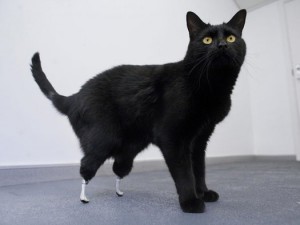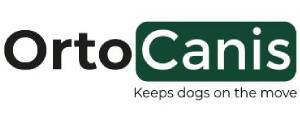Cats are also susceptible to injuries in the same way as dogs, but to a lesser degree thanks to their flexibility.
Musculoskeletal injuries can be treated using physiotherapy, rehabilitation and/or osteopathy. They are incurred as a result of flying cat or skydiver syndrome or an accident.
Flying cat or skydiver syndrome is characteristic of cats that live at high altitudes, and after chasing a fly or a butterfly, or being too curious, they fall from a great height. Even though we know that cats can overcome problems that arise as a result of falling and come out unscathed or with minor injuries that their bodies can deal with (this is where the saying that cats have nine lives originates from) there is a minority group of cats that suffer from more severe injuries and need veterinary treatment and subsequent rehabilitation.
 The most common injuries that cats incur following a fall or an accident include: Chest, facial, mouth, and abdominal injuries. Injuries that are usually treated using rehabilitation are limb or spine fractures and dislocations.
The most common injuries that cats incur following a fall or an accident include: Chest, facial, mouth, and abdominal injuries. Injuries that are usually treated using rehabilitation are limb or spine fractures and dislocations.
Physiotherapy and rehabilitation for cats is specific because in the majority of cases additional strategies need to be used in the sessions, and the techniques chosen are not always well received.
It is worth mentioning that cats are more relaxed after eating, and are therefore more receptive to rehabilitation exercises. Even though cats are very domesticated, they are normally not trained like dogs. They do not have to do physical exercise on a daily basis and they move around, play and wash when they want. Therefore, when certain techniques are applied to them or they are made to do physical exercise they can feel overwhelmed and they may become annoyed.In order to prevent this the atmosphere should be relaxed, without any elements that will incite them to get annoyed or lose concentration, and the techniques and exercises should be very gentle. Their intensity should be increased little by little.
Physiotherapy treatment varies depending on the animal, the type of injury, and the seriousness. It is important to start the treatment as soon as possible so that it is effective and also to avoid further effects, such as reduced mobility and/or chronic pain, which in the long term can lead to the onset of osteoarthritis.
The animal will go through different phases before making a complete recovery. It is essential that the targets that are set are met gradually. The recovery process is finalized when the animal is capable of carrying out day to day activities.
Marta Subirats Laguarda
Animal Physical Therapist
Certified Canine Rehabilitation Practitioner (University of Tennessee)
Ortocanis Technician

